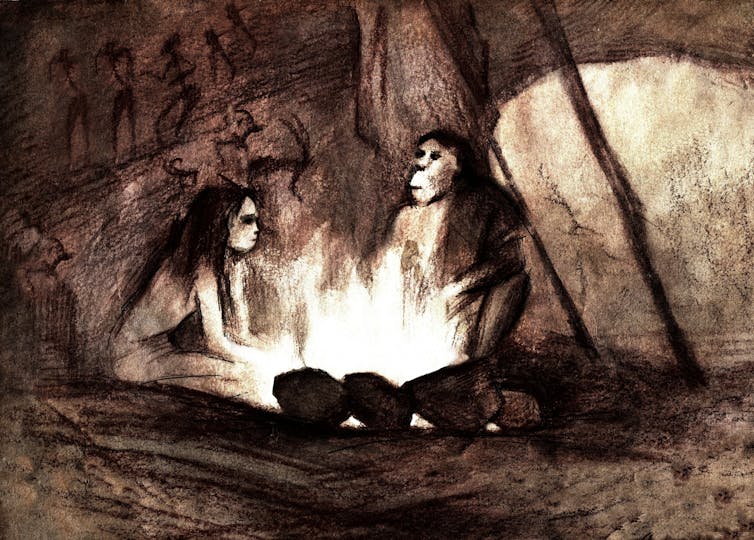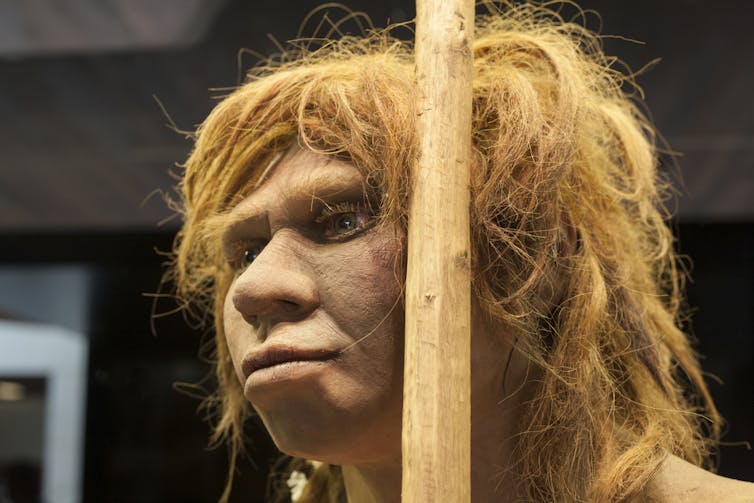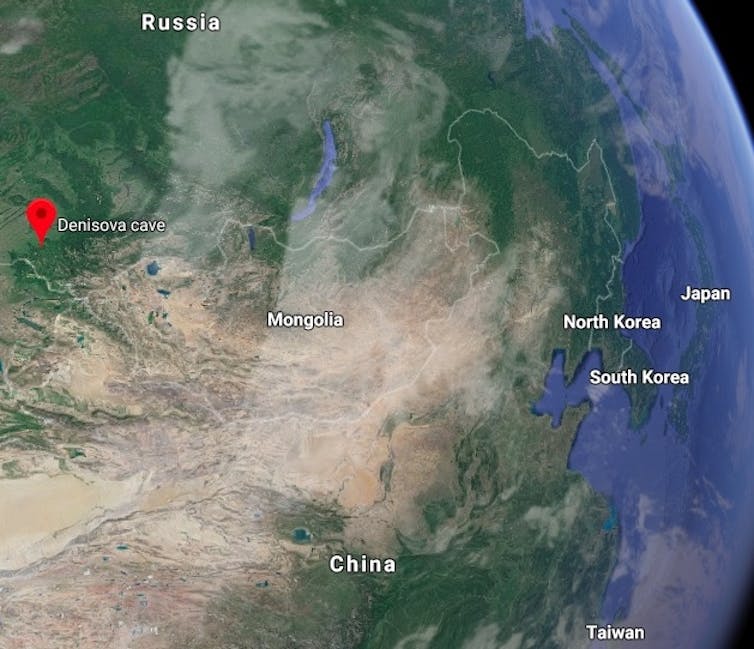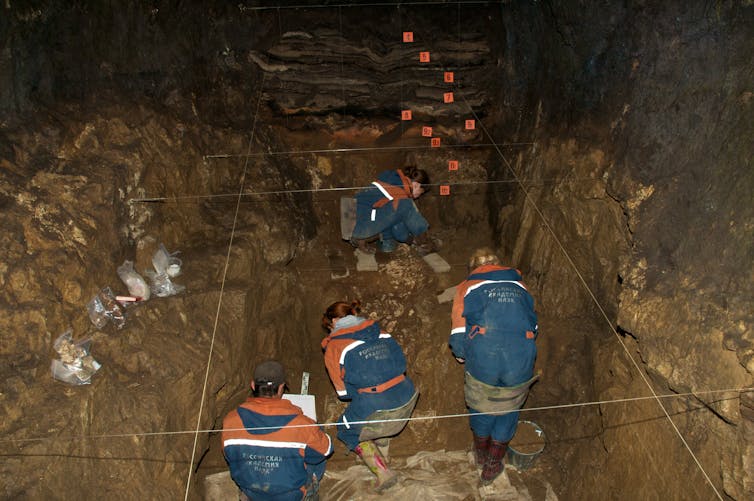SUMMARY
This is AI generated summarization, which may have errors. For context, always refer to the full article.

A new ancient DNA recently study published in Nature reports the first known person to have had parents of two different species. The studied remains belonged to a girl who had a Neanderthal mother and a Denisovan father.
Neanderthals (Homo neanderthalensis) lived throughout Europe and Western Asia until around 30,000 years ago. This species lived in several different ecological zones, survived 3 glacial periods, and were excellent hunters and tool-makers.
Denisovans (Homo sapiens denisova) we know very little about. Thus far they have only been found in Denisova Cave in Sibera as tiny bone fragments. We don’t yet know what they looked like – nor exactly what they were capable of.
Neanderthal, Denisovans, and modern humans all shared a common ancestor more than 400,000 years ago.

Read more: Why the Neanderthals may have been more sophisticated hunters than we thought – new study
Found in Denisova Cave, this child – known as “Denisova 11” – was at least 13 years old at the time of her death. Analysis of a piece of her bone found that the girl died more than 50,000 years ago.

This discovery occurred through ancient DNA analysis, whereby a small piece of the teenager’s bone was pulverized, the DNA extracted, and then sequenced. The sequence was then compared to previously analysed samples from Neanderthals, modern humans, and Denisovans. Her genetic traits could only be explained if her mother was a Neanderthal and her father was a Denisovan.
Denisova 11 was a first generation Neanderthal-Denisovan woman – perhaps we could call her a “Neandersovan”?
Neighbors of modern humans
Neanderthals and Denisovans inhabited Eurasia until about 40,000 years ago when they were replaced by modern humans (Homo sapiens).
But before this replacement occurred, there appears to have been a fair bit of mingling going on whenever the different groups met.
Indeed, the ancestors of modern-day Oceanians and Asians contain Denisovan DNA, while present-day non-Africans contain 2-4% Neanderthal DNA.
Read more: Neanderthals didn’t give us red hair but they certainly changed the way we sleep
More mobile than we thought
The DNA of Denisova 11 also suggests that there was some quite significant movement of Neanderthal groups between Western Europe and the East. Analysis of her DNA found that rather than being more closely related to a Neanderthal who lived in her home cave sometime prior to her birth, she instead showed more connections to those recovered in Western Europe.
This finding is interesting because most archaeological evidence indicates that Neanderthals – unlike modern humans – were not interested in long-distance movement. They don’t seem to have moved much beyond relatively constrained territories which provided everything they needed for day-to-day life.
Read more: Neanderthals cared for each other and survived into old age – new research
Denisova 11 suggests that at least some major movement of ancient humans occurred between west and east. But when? And why?
And how did a Neanderthal woman meet a Denisovan man? How did their respective communities interact? These are questions that now must be asked and investigated.
Mystery girl

While this young girl has told us so much about her ancestors, we know very little about her.
Because it was only a small piece of one of her long bones found, we don’t know how she died. We can’t know if she suffered any serious illness in her short life, nor if she ever broke a bone.![]()
We only know that she lived. – The Conversation | Rappler.com
Michelle Langley is a ARC DECRA Research Fellow at Griffith University.
This article was originally published on The Conversation. Read the original article.
Add a comment
How does this make you feel?
There are no comments yet. Add your comment to start the conversation.